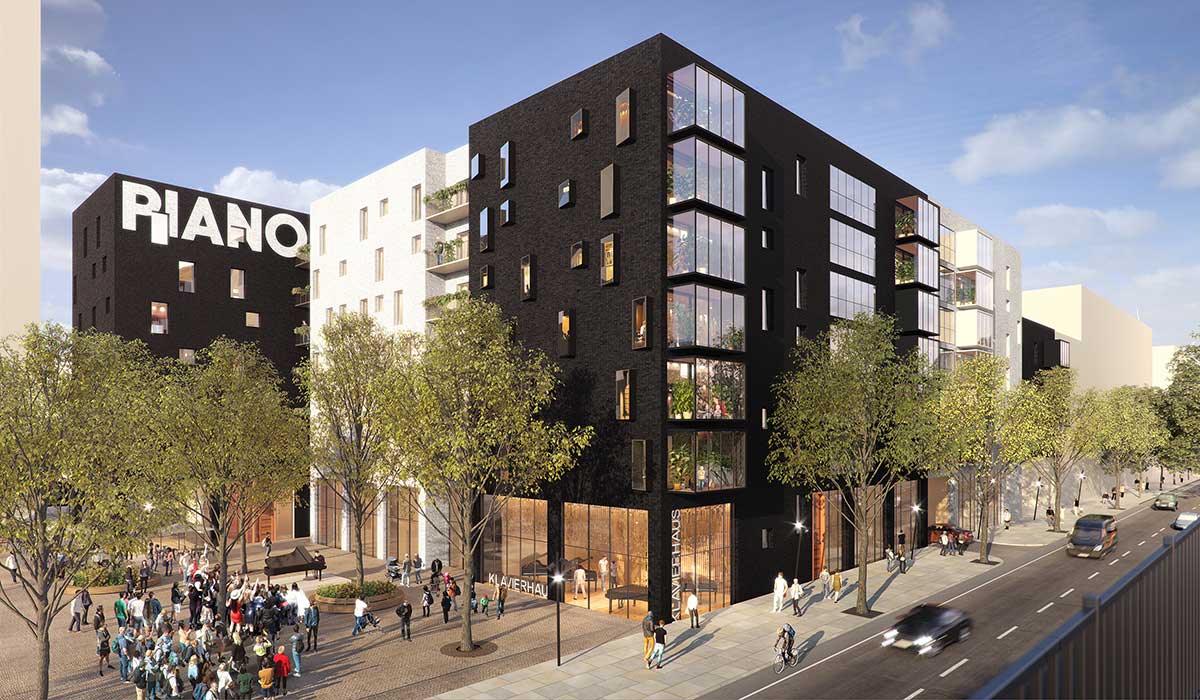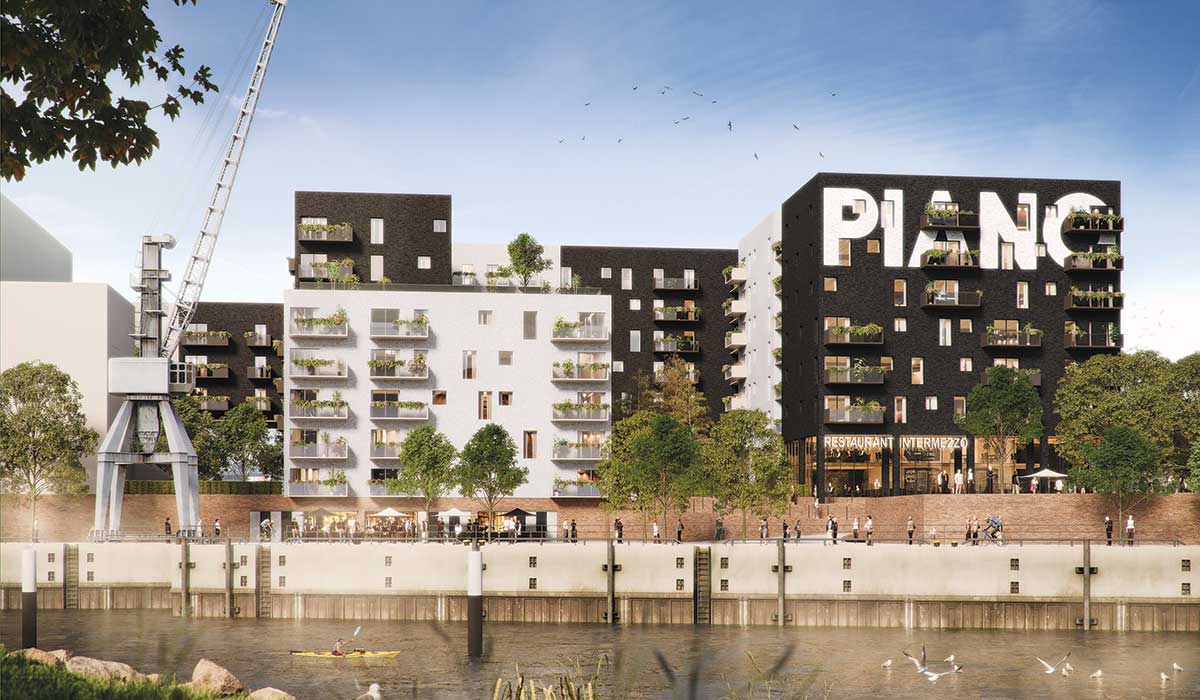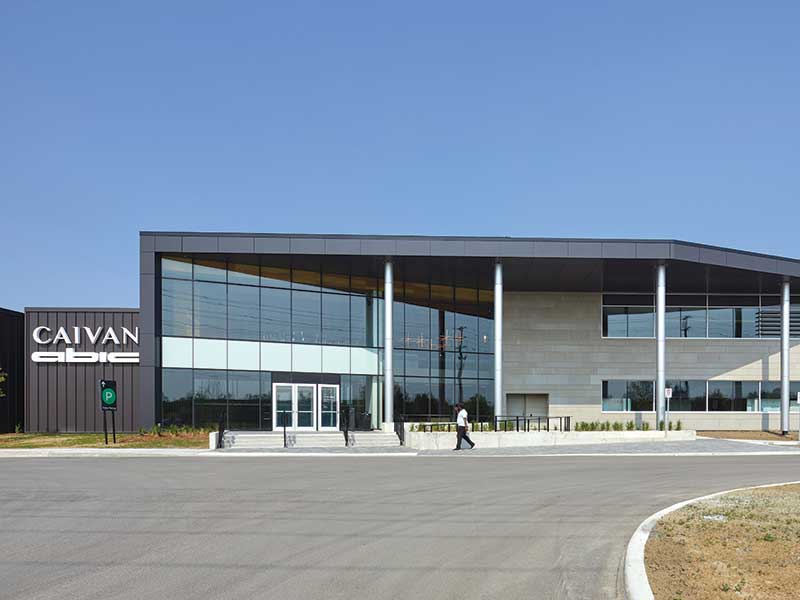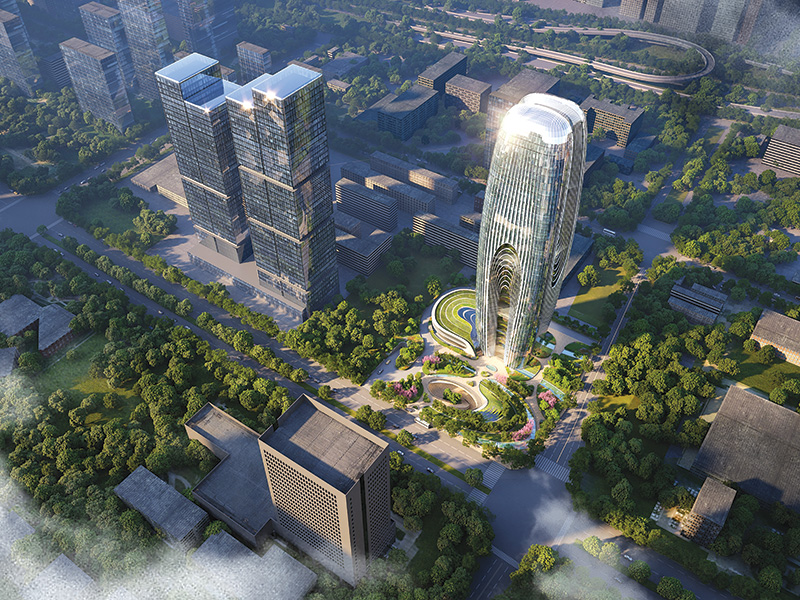
The project comprises 140 mixed tenure residential apartments in a variety of sizes including 45 co-living studios, piano workshops and rehearsal spaces, a restaurant and a piano bar. Co-living, co-working and the provision of shared amenity, including terraces and a large courtyard for all residents, promote a strong residential community.
The black and white colour scheme helps articulate the different building elements of the project. Vertically arranged balconies and winter gardens punctuate the alternate black or white brick façades with playfully arranged windows. A half-basement houses a piano bar opening onto the waterside promenade, which connects the development directly to the newly opened U-Bahn station nearby.
PianoBau features a range of sustainable design features and technologies. Warm timber interiors echo the inside of a grand piano with the cross-laminated timber from sustainable sources. This improves the environmental performance of the building and enables generous floor-to-ceiling heights. Green roofs and solar PV cells enhance the project’s sustainability credentials.

Fletcher Priest has won a competition amongst seven international architects for the design of this mixed-use residential development as part of HafenCity, Hamburg – considered the most ambitious inner-city development project in Europe. Judges included representatives of the City of Hamburg and HafenCity, the client Patrizia, local politicians, and both local and international architects.
Photo credit: Fletcher Priest Architects
Source: V2Com









